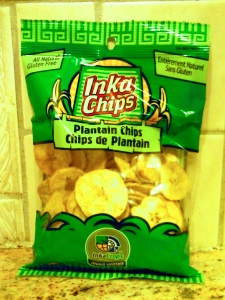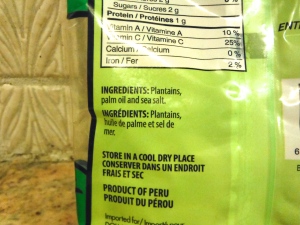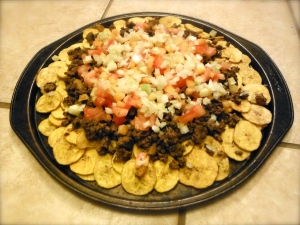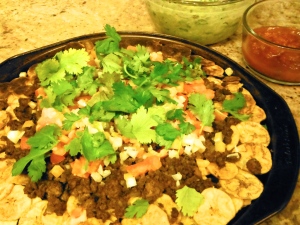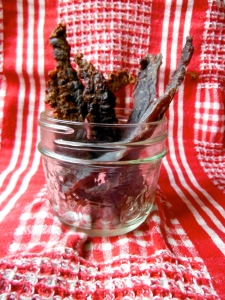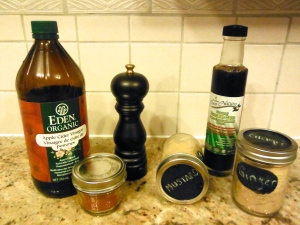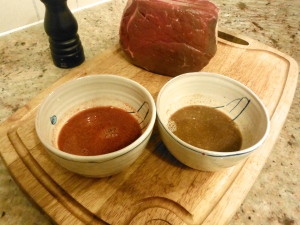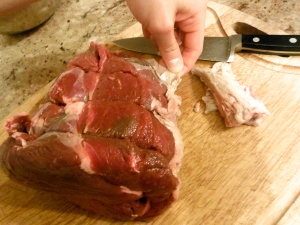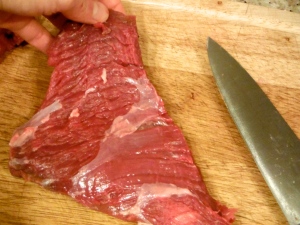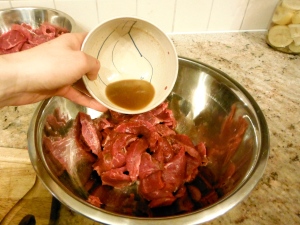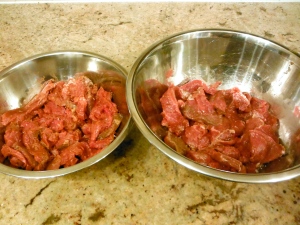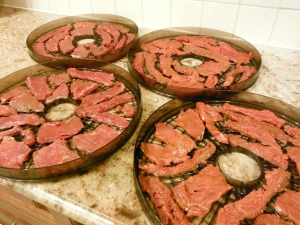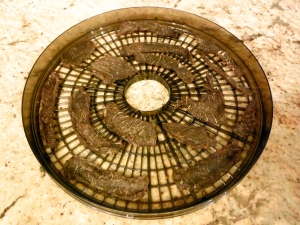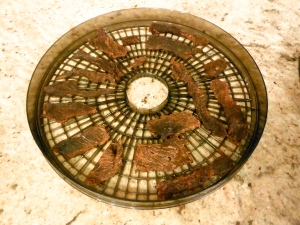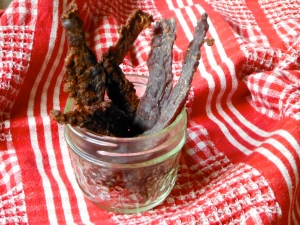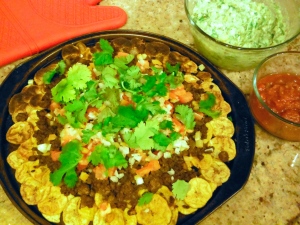 Anyone else absolutely love nachos? I was a weird kid and actually kind of hated chips. There was one exception though – tortilla chips. Maybe it’s because I have such fond memories of ski vacations with my family…the 4 of us curling up together after a long day of skiing, watching NCAA basketball and sharing a bag of Tostitos. I don’t know what it is, but I can eat an entire bag of tortilla chips I love them so much!
Anyone else absolutely love nachos? I was a weird kid and actually kind of hated chips. There was one exception though – tortilla chips. Maybe it’s because I have such fond memories of ski vacations with my family…the 4 of us curling up together after a long day of skiing, watching NCAA basketball and sharing a bag of Tostitos. I don’t know what it is, but I can eat an entire bag of tortilla chips I love them so much!
Unfortunately corn is one of the riskiest foods to consume these days. While it’s technically gluten-free (and therefore used in practically every commercial gluten-free food product), it has 2 very serious properties.
1. The protein found in corn is incredibly similar to gluten, and as a result, is one of the top cross-reactors in the case of celiac disease. In plain english – if you’re sensitive, allergic or have an immune response to gluten, there is a fairly decent chance you might react to corn as well.
2. Corn has been aggressively genetically modified – and in an incredibly frightening way. Genetically modified corn has had the gene from the bacteria Bacillus thuringiensis inserted into it. This gene codes for the production of a pesticide. What this means is every single cell within the corn plant is secreting it’s own pesticides. Scary right? Well, it gets worse. The way this pesticide works is by damaging the digestive lining of the insect. This causes septicaemia (a blood infection) in the insect, which results in death. Have you read my post about Leaky Gut? This pesticide kills insects by creating leaky gut in them. Can you say terrifying? To be fair, there are no studies confirming the danger of Bt Corn. To be equally fair, there are no longterm studies proving the safety either. So pretty much, we are all the subjects in this study right now, which I am personally opting out of, thank you very much!
While I do enjoy some corn on the cob in the summer (most sweet corn is not Bt corn) and the occasional organic tortilla chip, I some how can’t ever seem to stop at a reasonable portion. And boy do I pay for it. So, I started looking for another option!
Enter: the plantain chip.
Oh man do I love plantains. I make pancakes and biscuits out of them; fry them up in coconut oil for breakfast or a side at dinner; and indulge in plantain chips on a semi-regular basis. They have a very low risk of being an allergen and are well tolerated by most people. They are naturally gluten-free, grain-free, corn-free (etc etc) and they are a fabulous prebiotic (ie. a food for your beneficial gut bacteria). The main problem with most plantain chips? They contain crappy, damaged, seed/crop oils that result in chronic inflammation in the body. That’s where this amazing brand comes in! Check out those ingredients: plantain, palm oil (a stable oil, like coconut oil) and salt! Winner!
Note: palm oil is not the most friendly oil to the environment. But let’s be scientifically fair when we talk about oils. Genetic modification, aggressive spraying with pesticides and mono-cropping all cause horrific damage to the environment as well. We just don’t talk about that because Big Ag makes a ton of moula off of seed oils (canola, soybean, corn), which utilize all 3 of these practices.
I’m pretty sure there are several brands of clean plantain chips in the USA, but in Canada, this is the only one I’ve ever found (ps. let me know if you know of another brand!). And the store? Dollarama! How funny is that? Any time I’m near a Dollarama, I go buy at least 10 bags of these guys. Oh man, they’re so delicious! Here’s how I turn them into nachos:
Plantain Chip Nachos
Ingredients
- 2 bags of Inka Chip Plantain Chips
- ⅔ lb of ground beef
- tex mex spices (chili, cumin, oregano)
- sea salt and pepper
- onion
- bell pepper
- garlic
- tomato
- hot sauce
- cilantro
- homemade guacamole
- salsa
- optional: raw cheddar cheese, goat cheddar or organic sour cream
Directions
1. Sautee a chopped onion, bell pepper and garlic for a few minutes. Add ground beef, seasonings, sea salt and pepper, and cook through. I usually make a full pound of ground beef and save some for leftovers or an egg scramble the next morning. I never measure my spices, so play around! If you want more specific measurements, check out my recipe for Lettuce Wrap Tacos.
2. Turn the oven to broil.
3. On a baking sheet, spread out the plantain chips evenly. Top with ground beef and additional toppings: red onion, diced bell pepper, tomatoes. Sprinkle with a little hot sauce. If you are using cheese, add it now.
4. Broil for 3-7 minutes, depending on the heat of your broiler. Don’t let it burn!
5. Top with cilantro and serve with guacamole and salsa.
You’ll notice that the ingredients list and directions are pretty open-ended. I did that on purpose, because I don’t actually follow a recipe. It’s pretty hard to mess this up, so get creative! What veggies do you like on your nachos? Olives, mushrooms, fresh lettuce? Throw them on there! Do you love black beans and tolerate them well? Give ’em a go as well. Have fun with this recipe!

